*NURSING > TEST BANK > TEST BANK PATHOPHYSIOLOGY THE BIOLOGIC BASIS FOR DISEASE IN ADULTS AND CHILDREN 8th Edition (All)
TEST BANK PATHOPHYSIOLOGY THE BIOLOGIC BASIS FOR DISEASE IN ADULTS AND CHILDREN 8th Edition
Document Content and Description Below
TEST BANK PATHOPHYSIOLOGY THE BIOLOGIC BASIS FOR DISEASE IN ADULTS AND CHILDREN 8th Edition document contains relevant questions with multiple choices. The correct answers given and well explained. ... The questions are grouped into chapters, also the questions relevant to their respective chapter i.e. Chapter 01: Cellular Biology MULTIPLE CHOICE 1. Which statement best describes the cellular function of metabolic absorption? a. Cells can produce proteins. b. Cells can secrete digestive enzymes. c. Cells can take in and use nutrients. d. Cells can synthesize fats. ANS: C In metabolic absorption, all cells take in and use nutrients and other substances from their surroundings. The remaining options are not inclusive in their descriptions of cellular metabolic absorption. PTS: 1 DIF: Cognitive Level: Remembering 2. Where is most of a cell’s genetic information, including RNA and DNA, contained? a. Mitochondria b. Ribosome c. Nucleolus d. Lysosome ANS: C The nucleus contains the nucleolus, a small dense structure composed largely of RNA, most of the cellular DNA, and the DNA-binding proteins, such as the histones, which regulate its activity. The mitochondria are responsible for cellular respiration and energy production. Ribosomes’ chief function is to provide sites for cellular protein synthesis. Lysosomes function as the intracellular digestive system. PTS: 1 DIF: Cognitive Level: Remembering 3. Which component of the cell produces hydrogen peroxide (H2O2) by using oxygen to remove hydrogen atoms from specific substrates in an oxidative reaction? a. Lysosomes b. Peroxisomes c. Ribosomes d. Endosome ANS: B Peroxisomes are so named because they usually contain enzymes that use oxygen to remove hydrogen atoms from specific substrates in an oxidative reaction that produces H2O2, which is a powerful oxidant and potentially destructive if it accumulates or escapes from peroxisomes. Ribosomes are RNA-protein complexes (nucleoproteins) that are synthesized in the nucleolus and secreted into the cytoplasm through pores in the nuclear envelope called nuclear pore complexes. Lysosomes are saclike structures that originate from the Golgi complex and contain more than 40 digestive enzymes called hydrolases, which catalyze bonds in proteins, lipids, nucleic acids, and carbohydrates. An endosome is a vesical that has been pinched off from the cellular membrane. [Show More]
Last updated: 1 year ago
Preview 1 out of 509 pages

Reviews( 0 )
Document information
Connected school, study & course
About the document
Uploaded On
Nov 26, 2022
Number of pages
509
Written in
Additional information
This document has been written for:
Uploaded
Nov 26, 2022
Downloads
0
Views
44

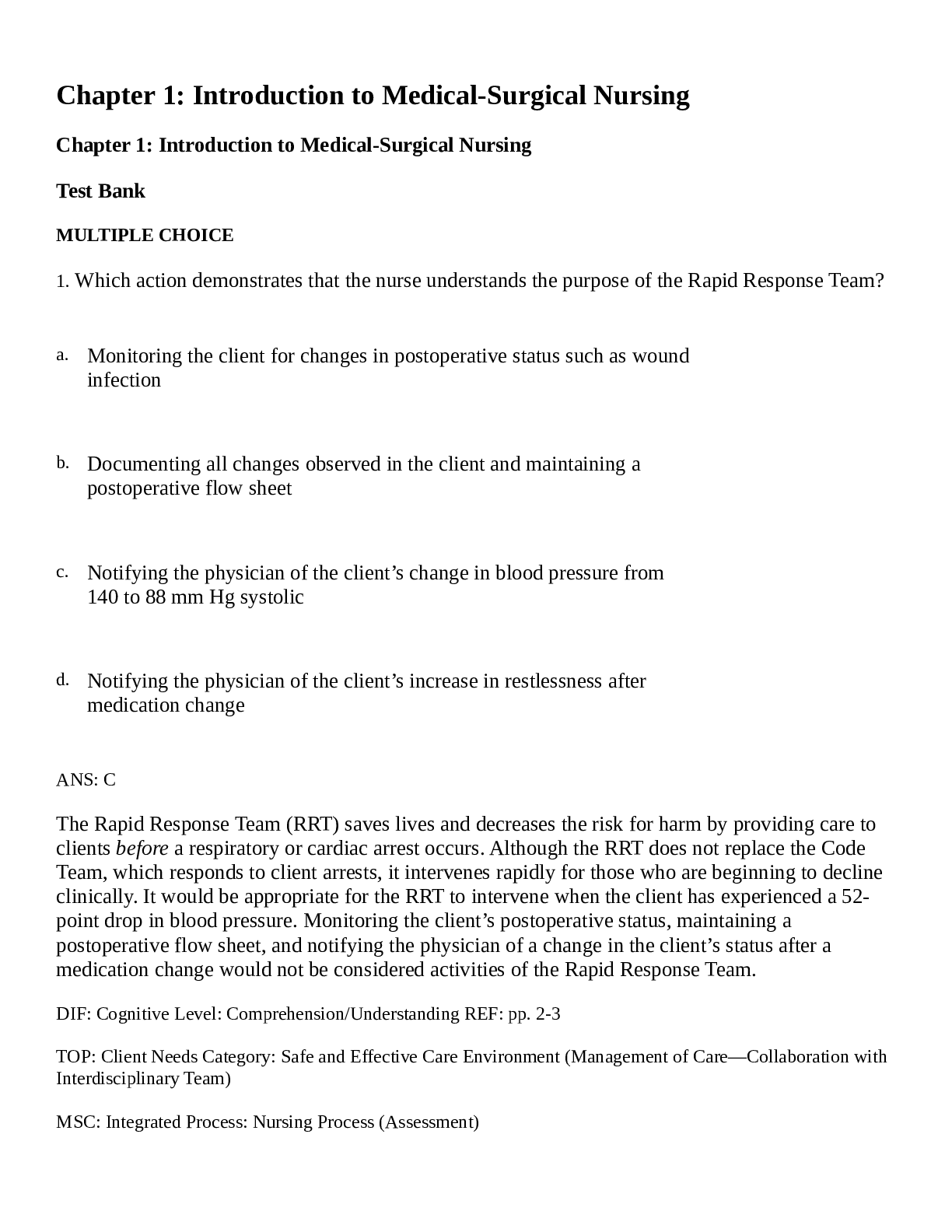
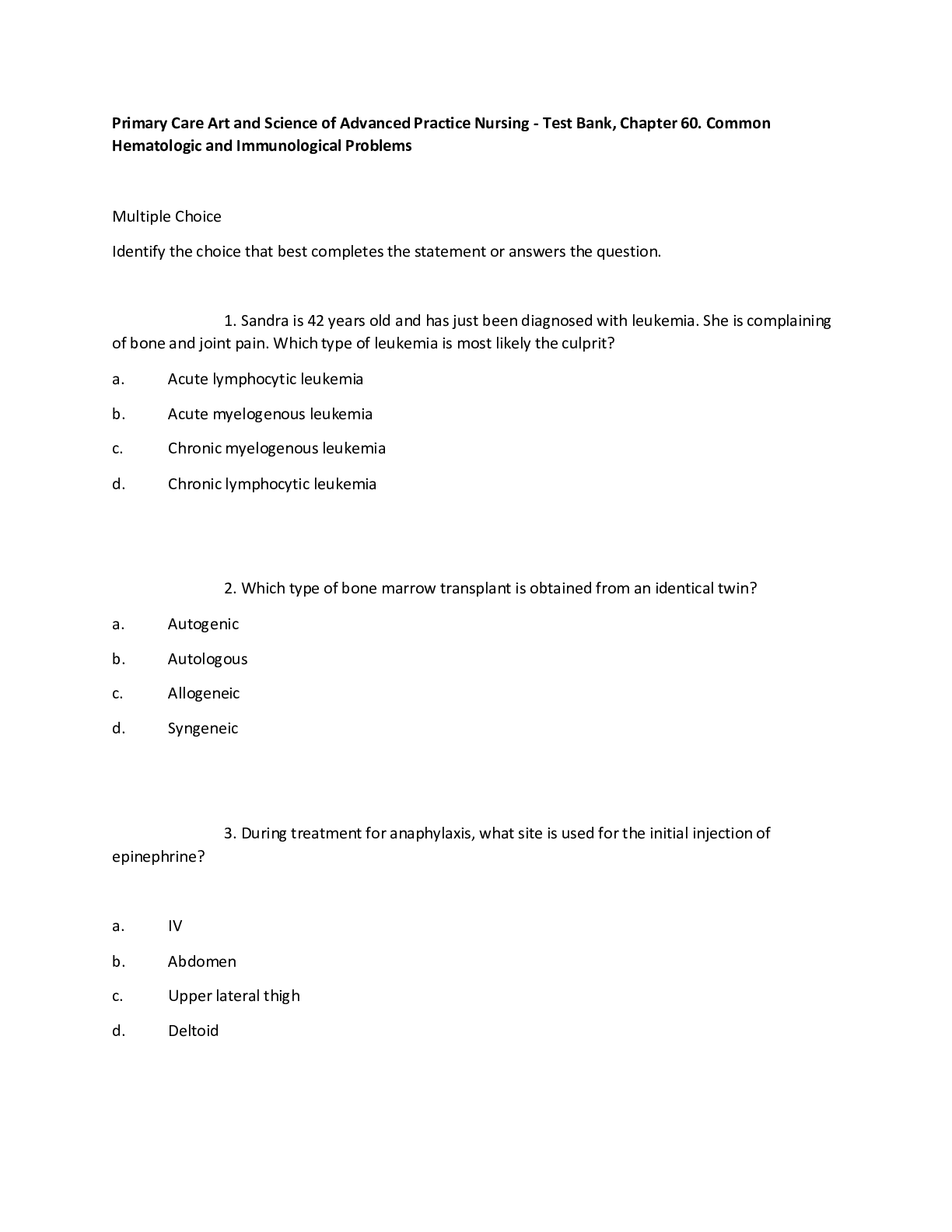
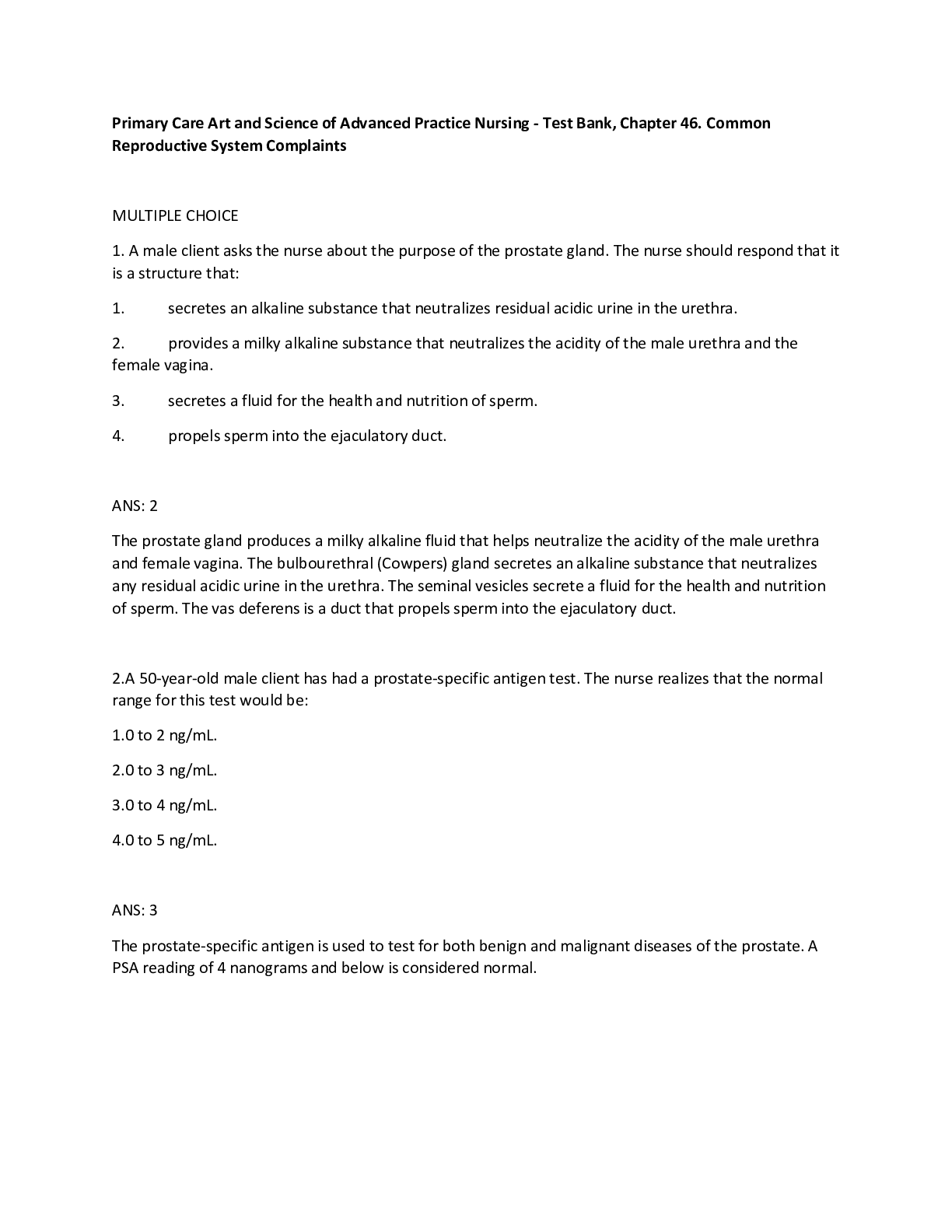
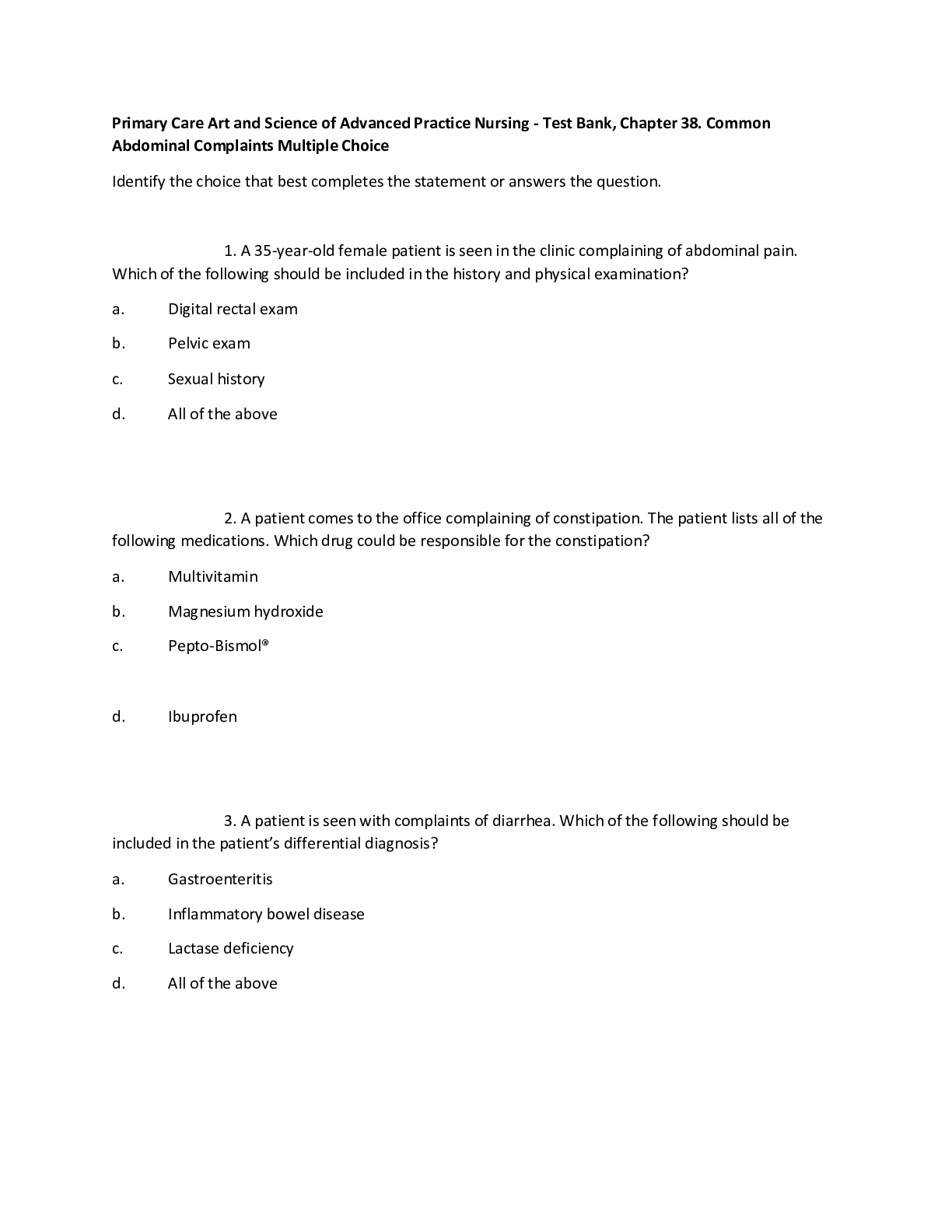
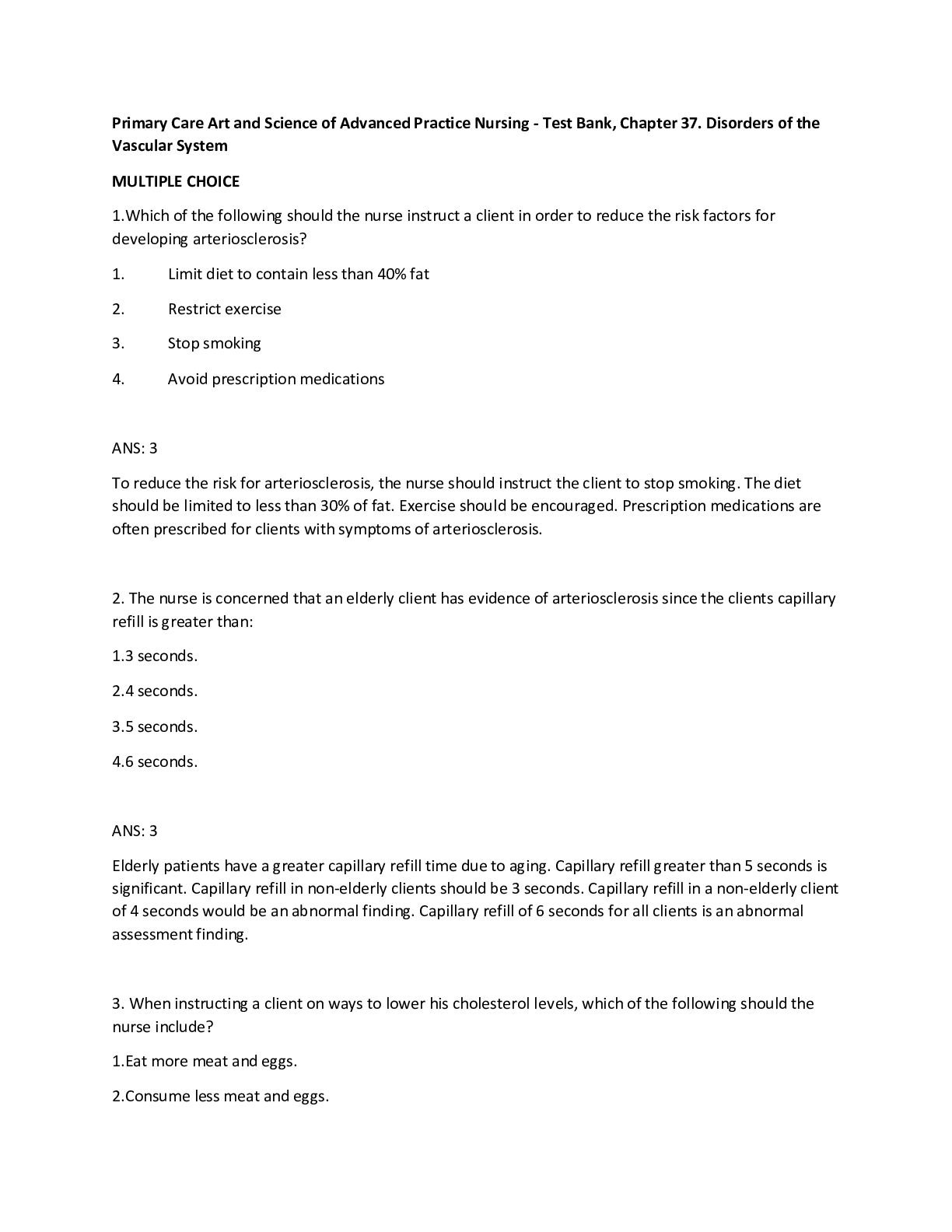

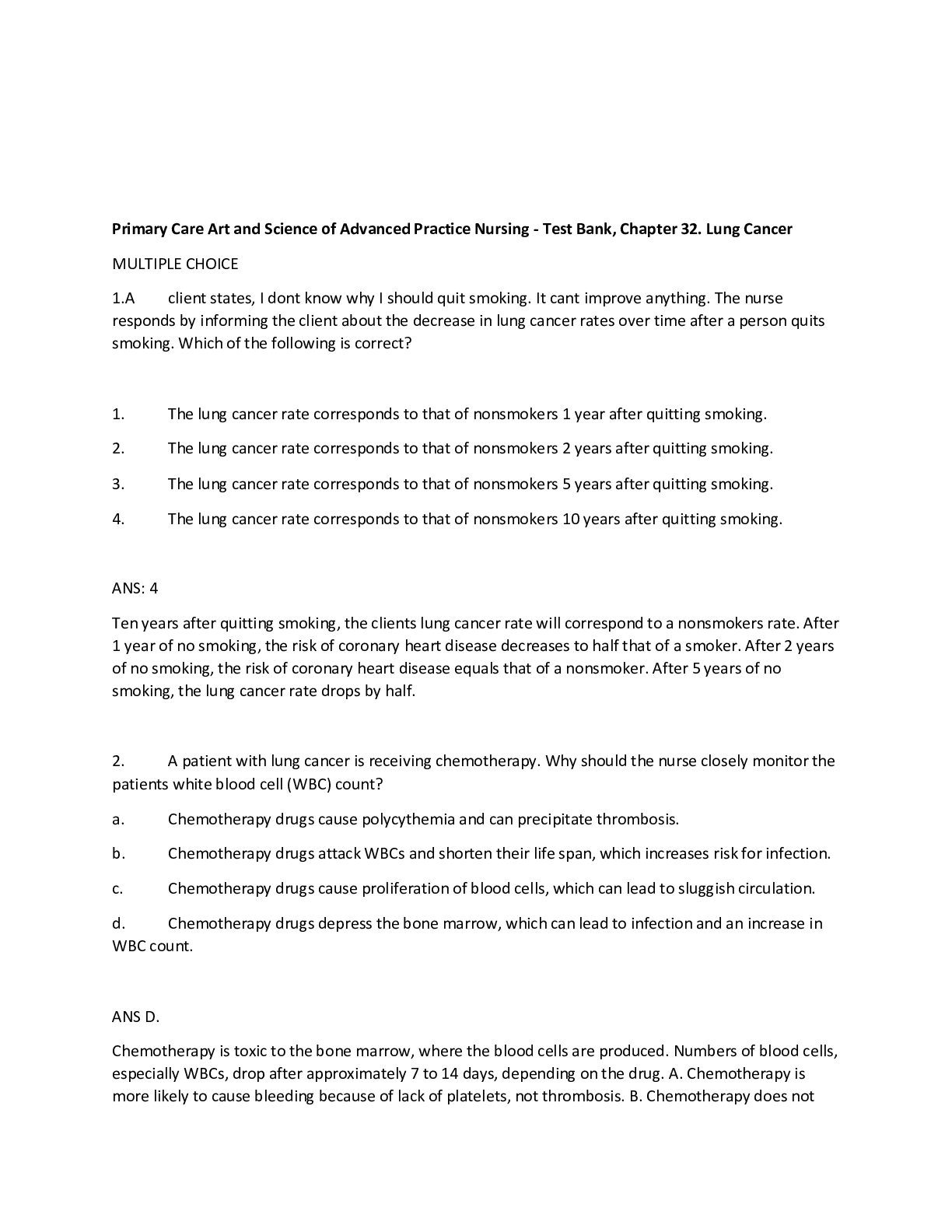
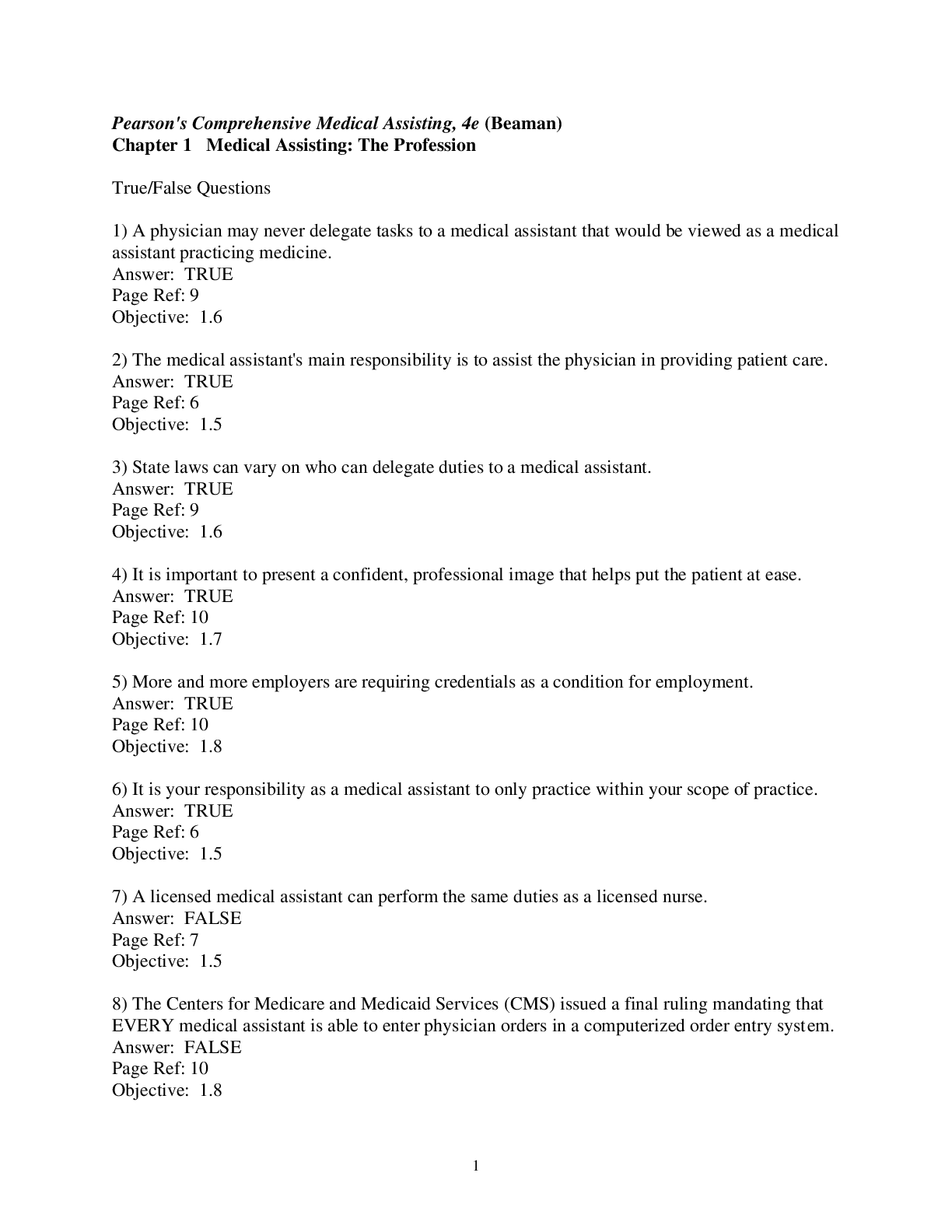
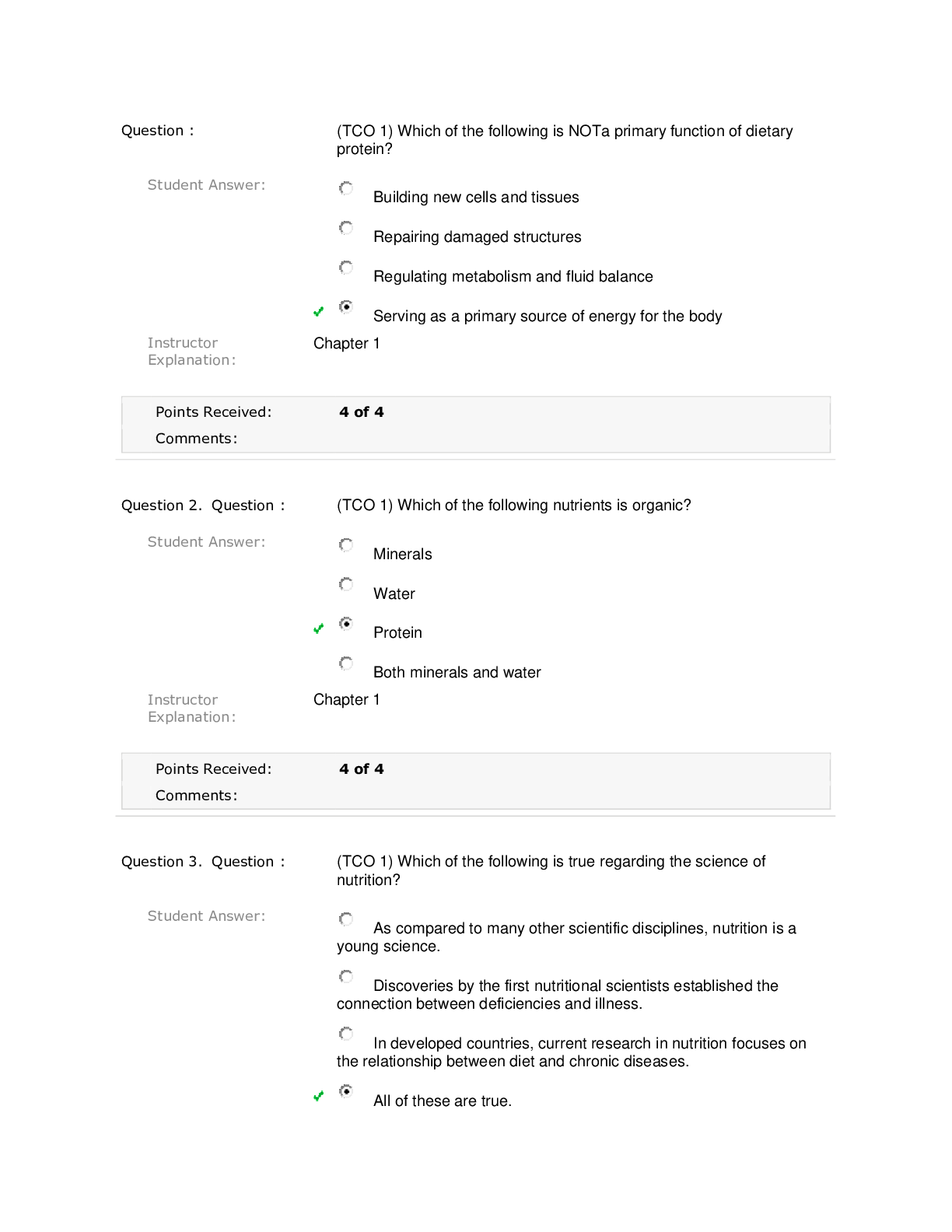
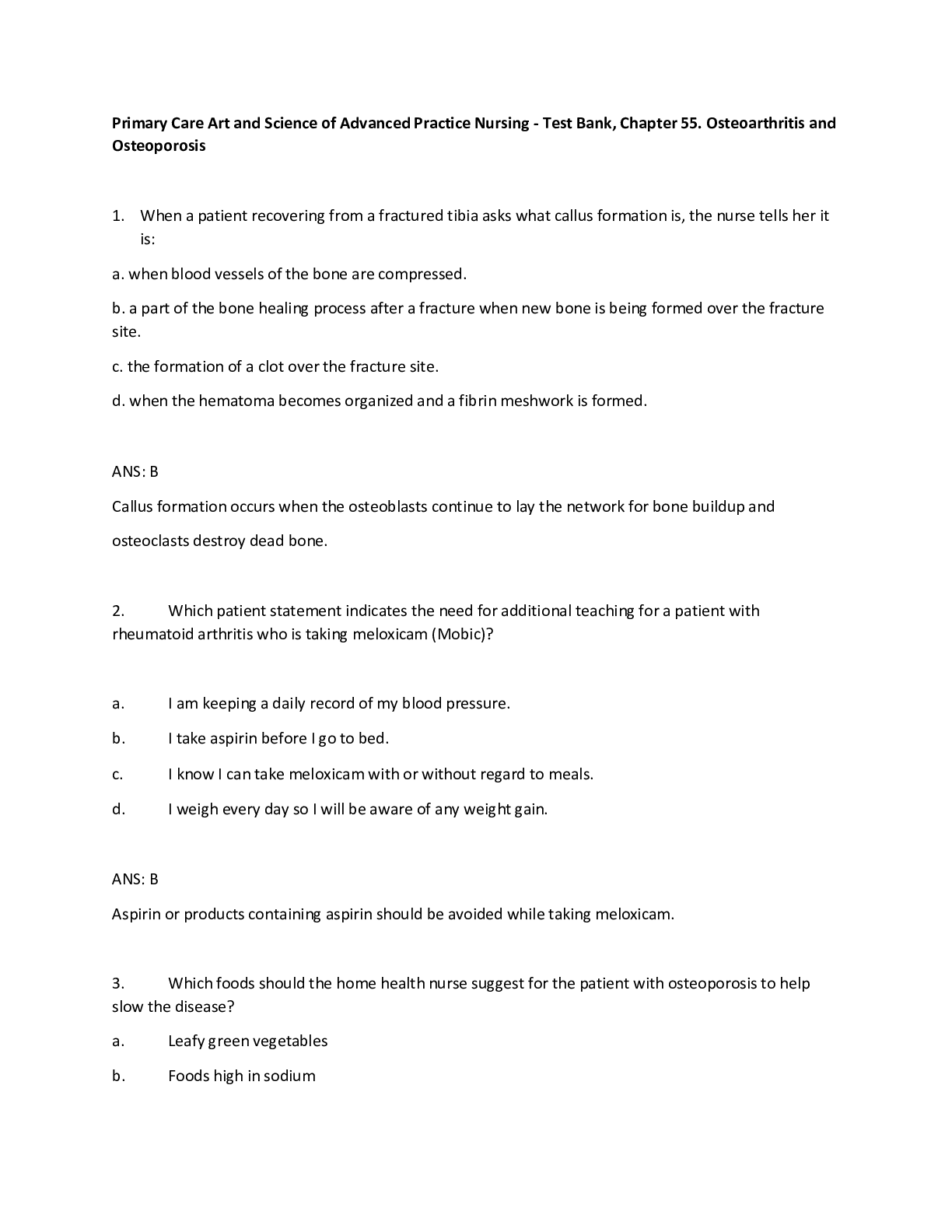
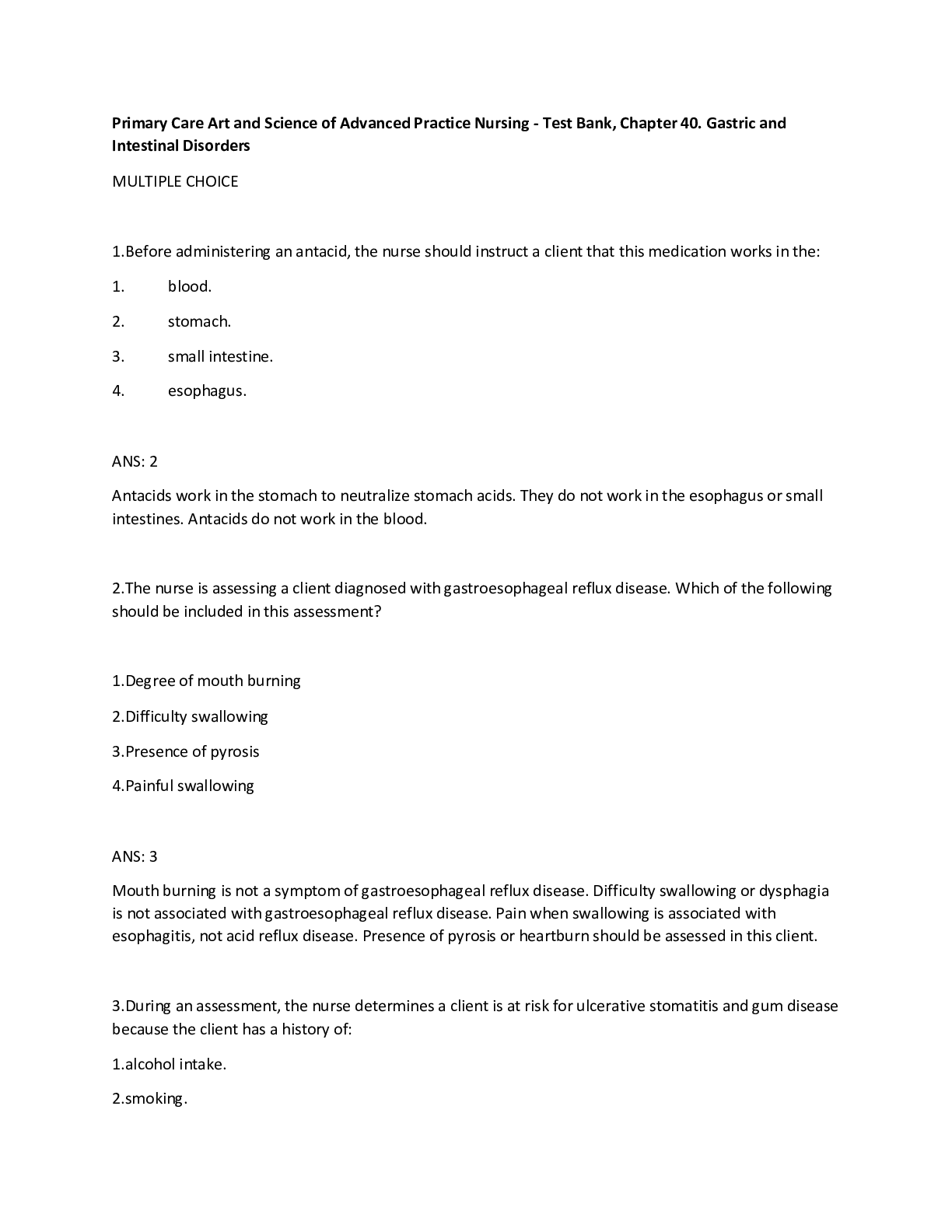

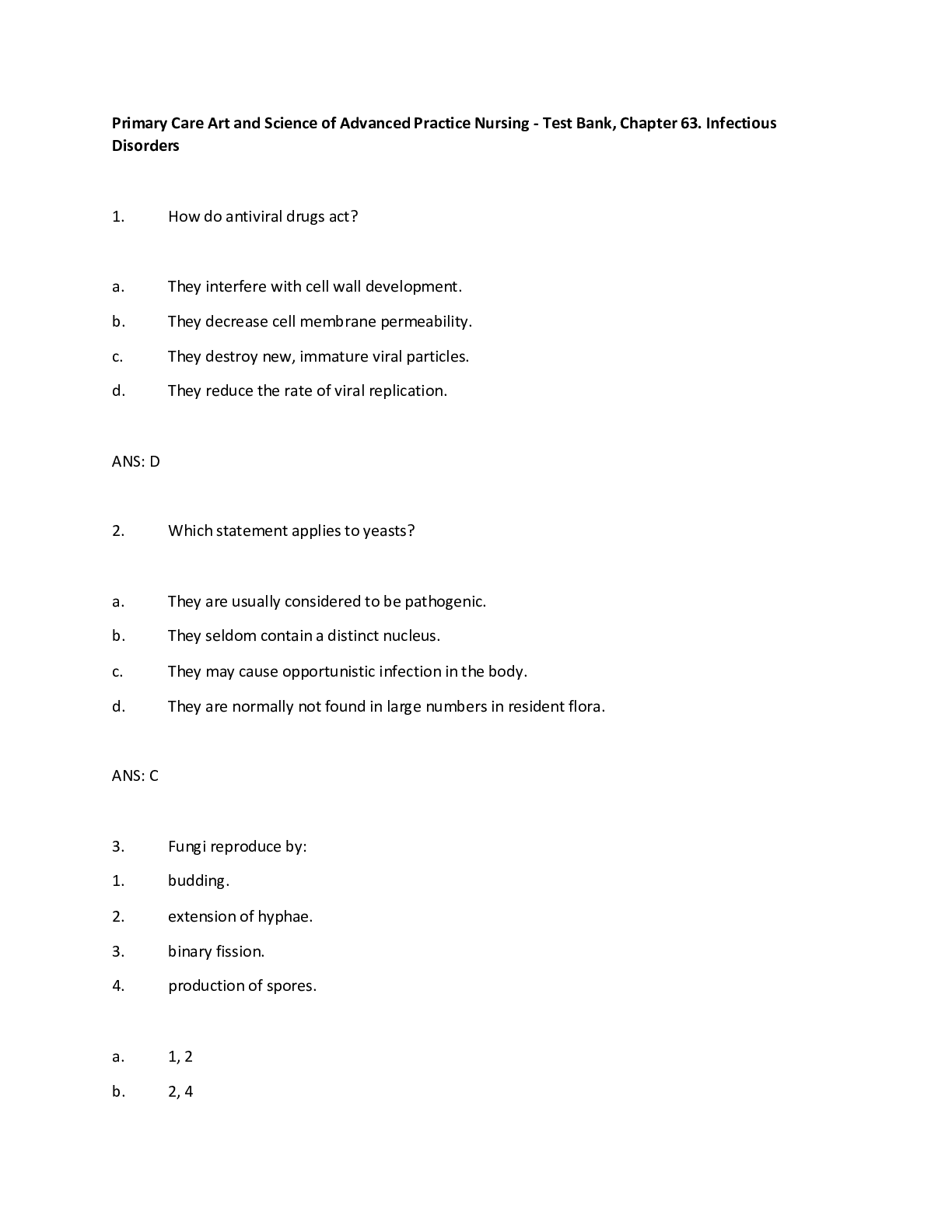
.png)


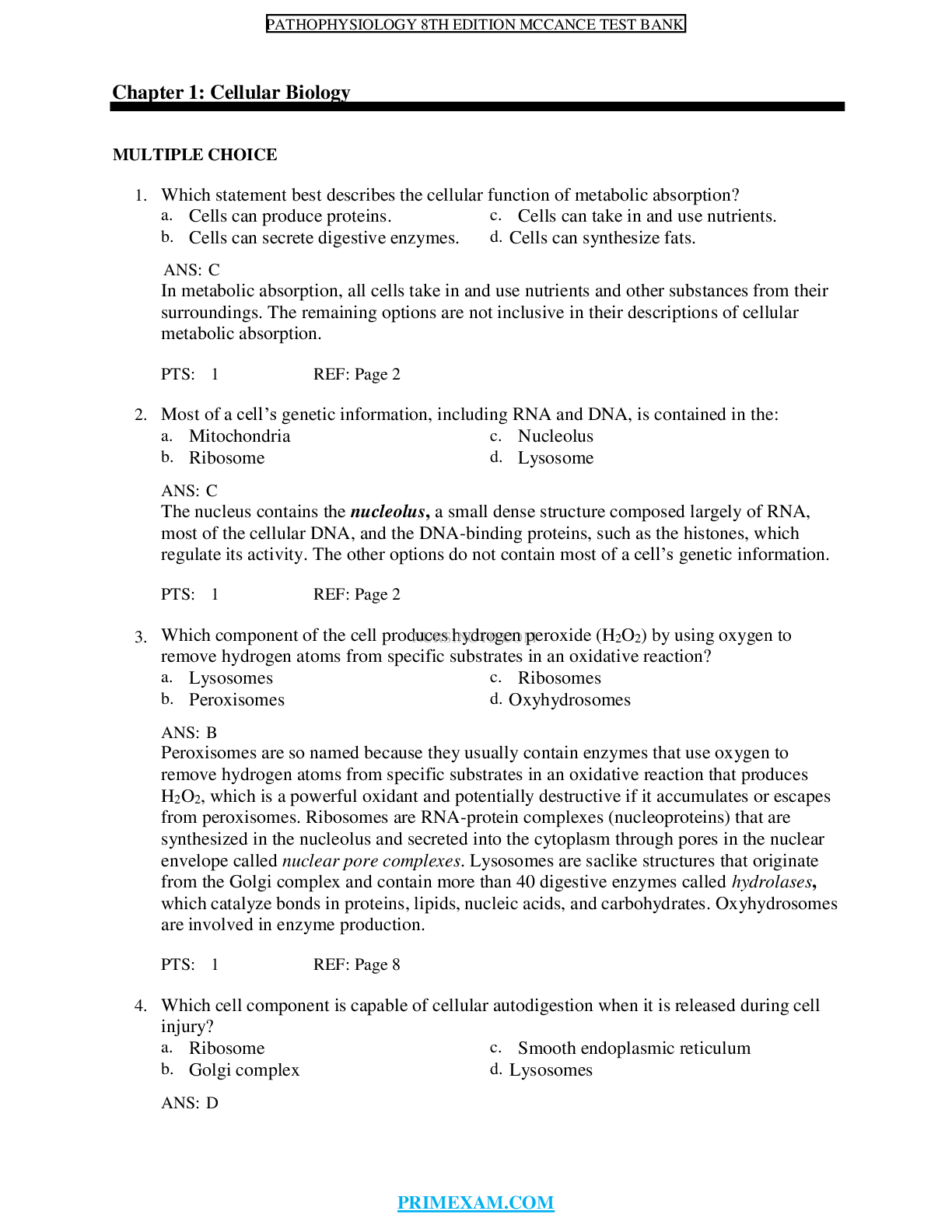

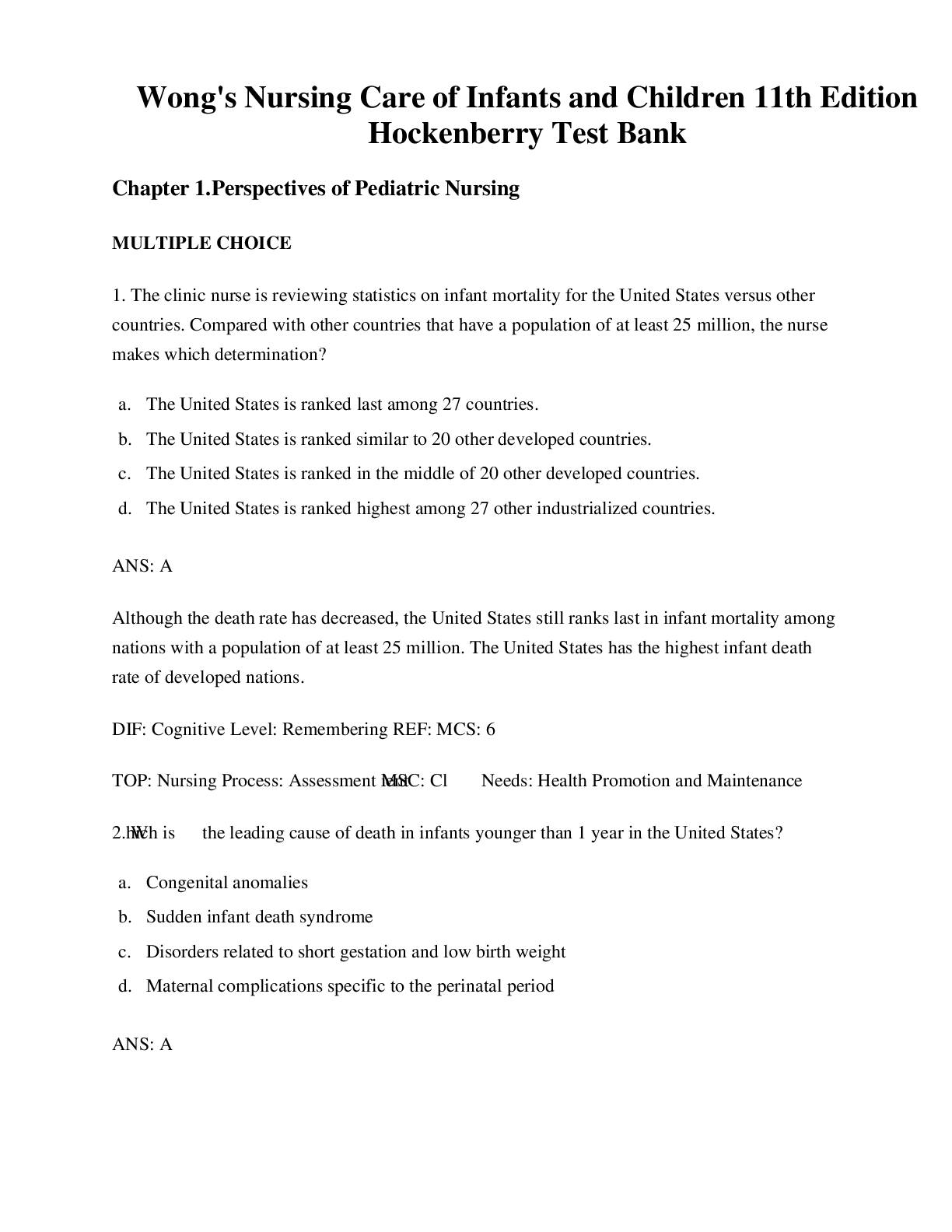
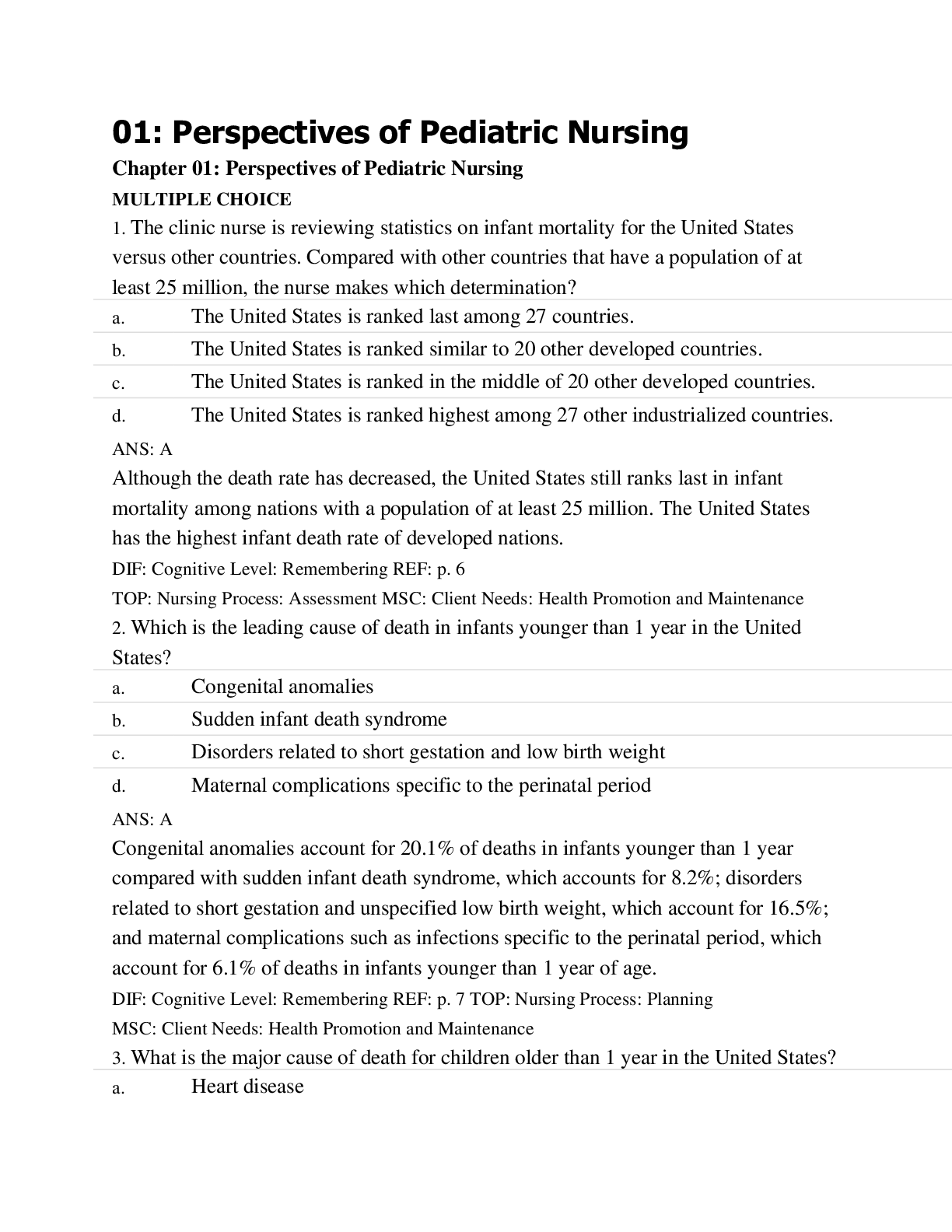

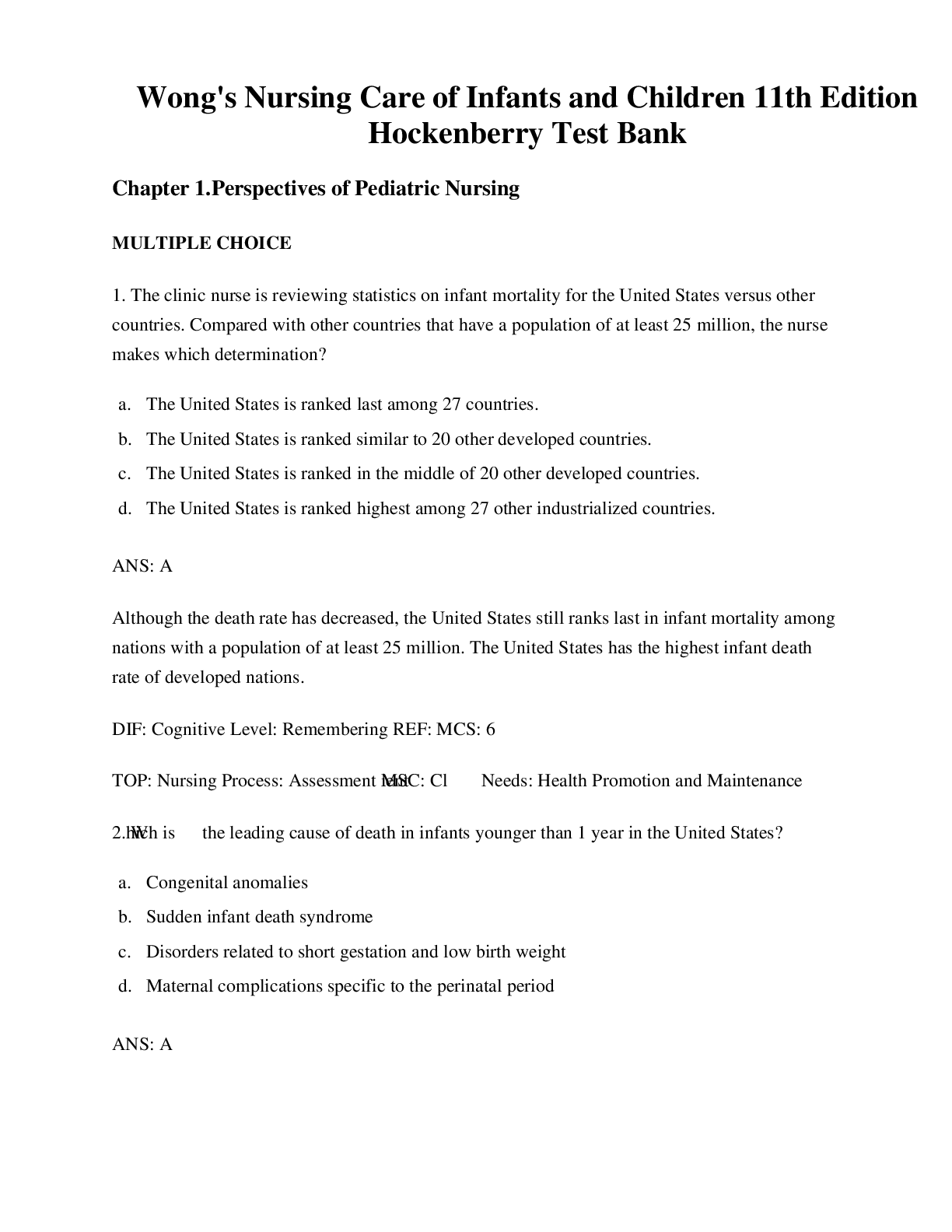
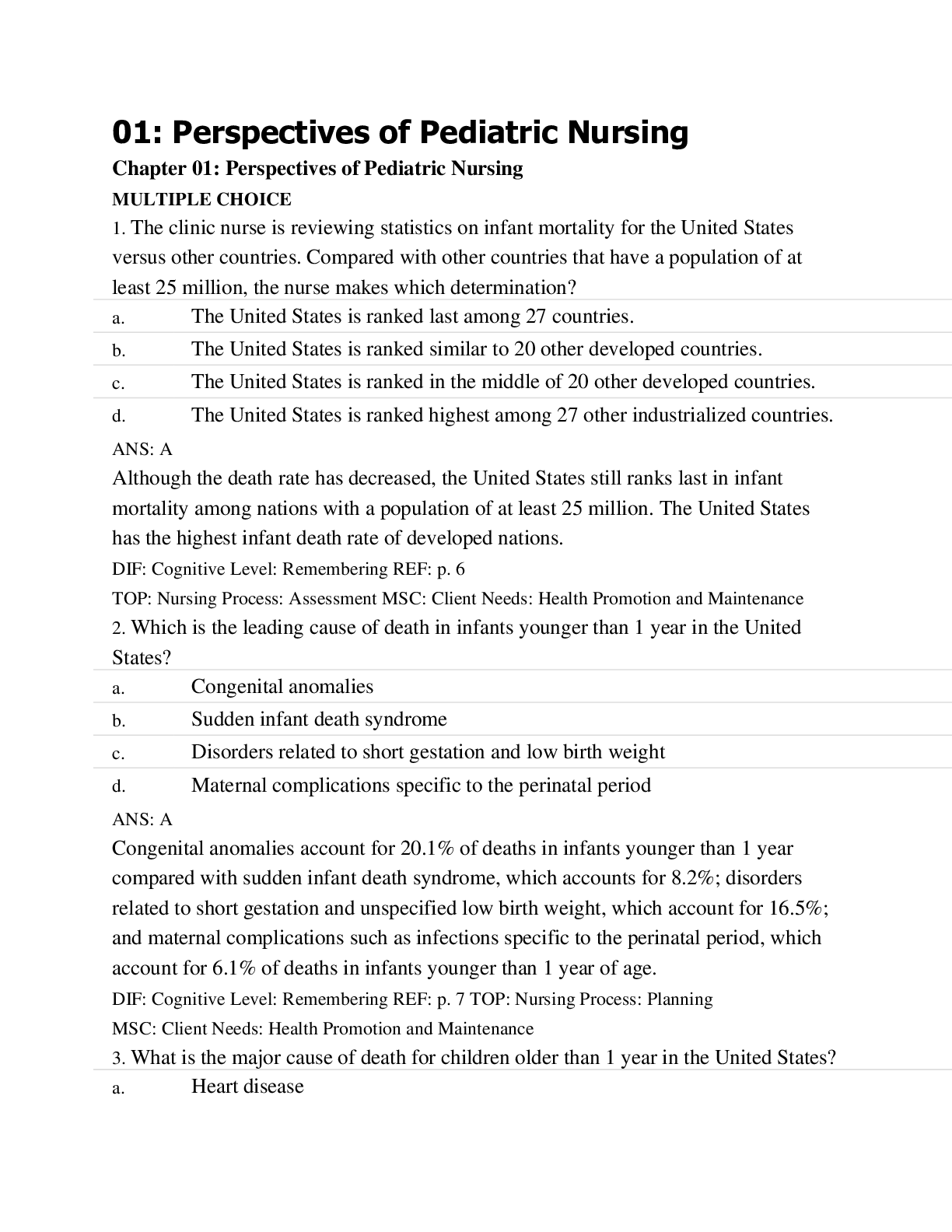


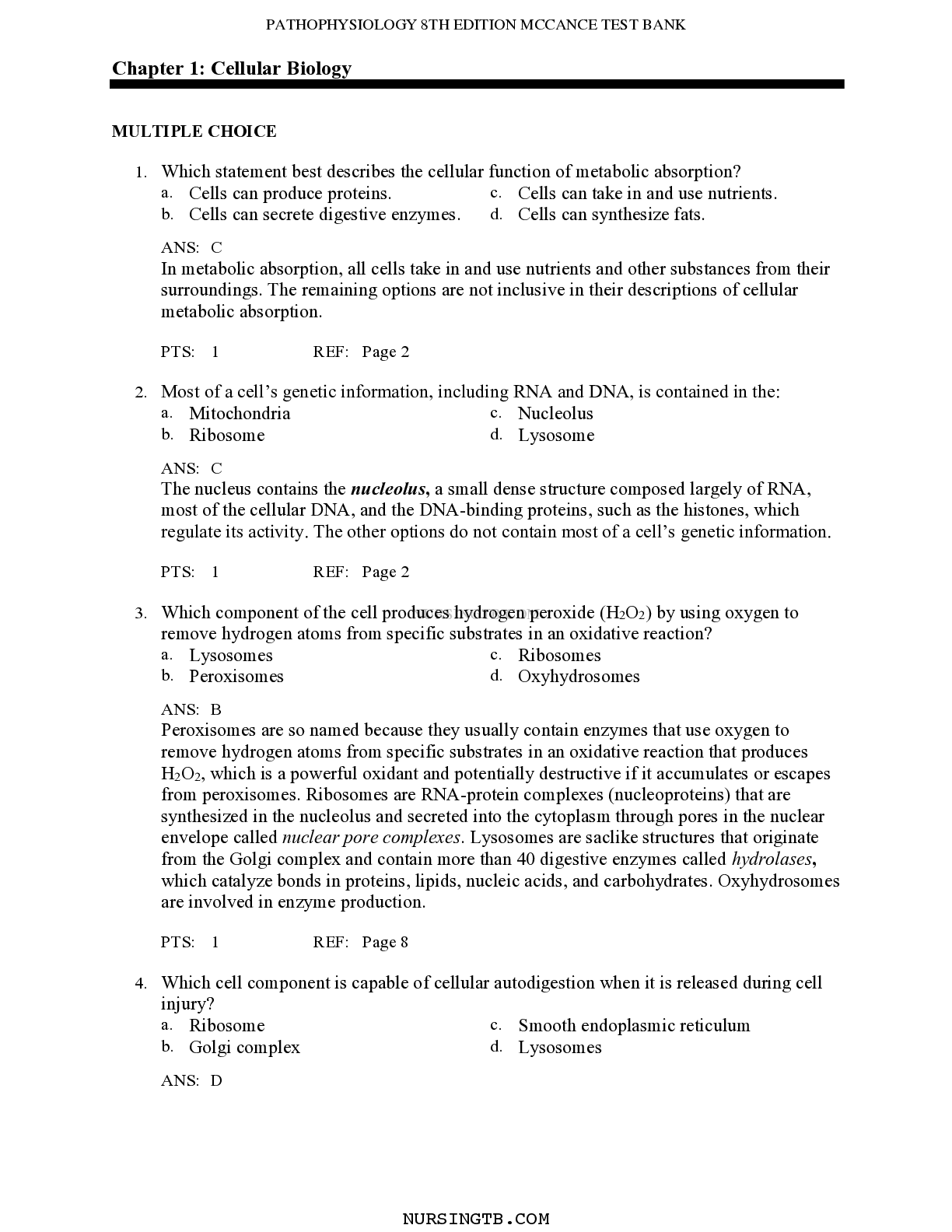

.png)

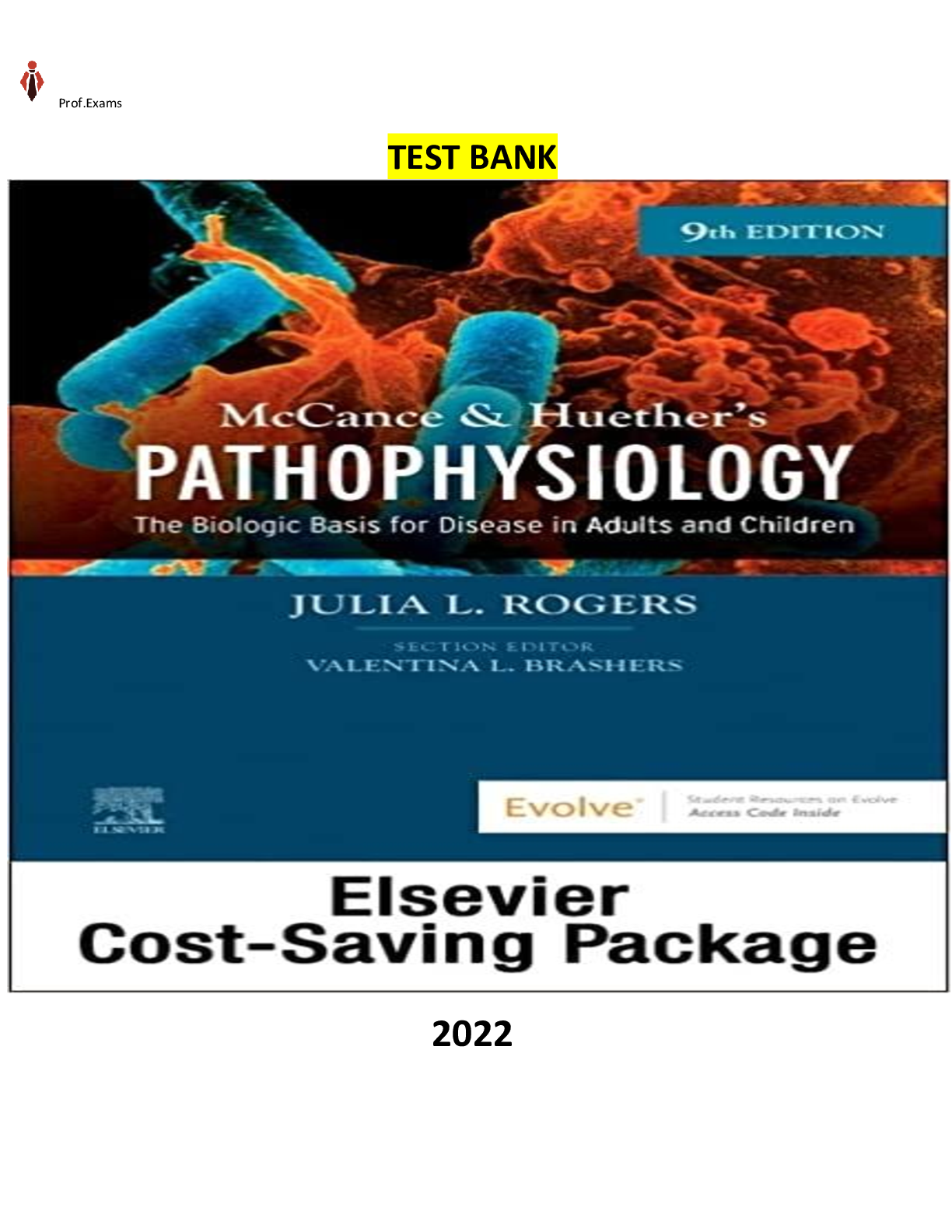

.png)


